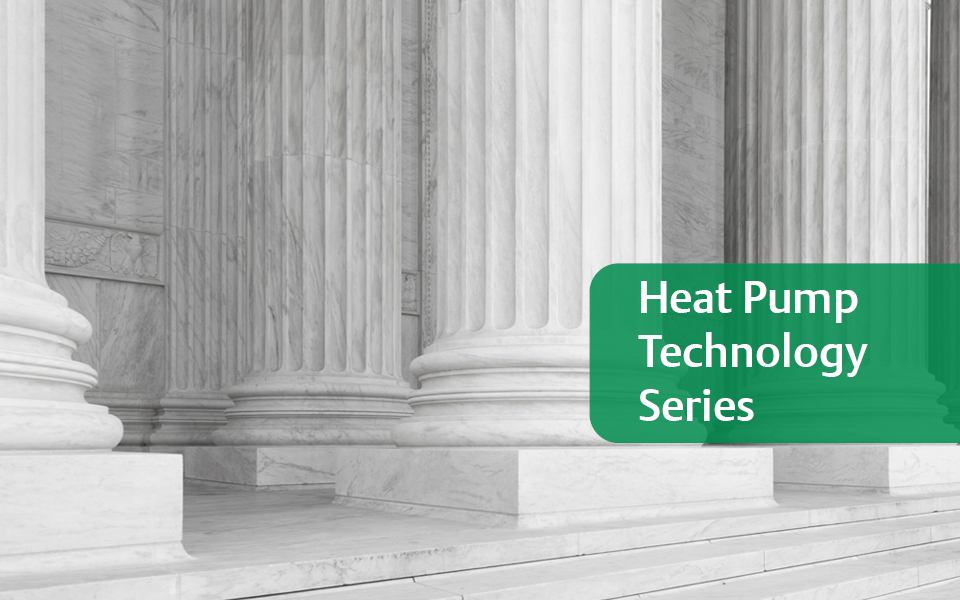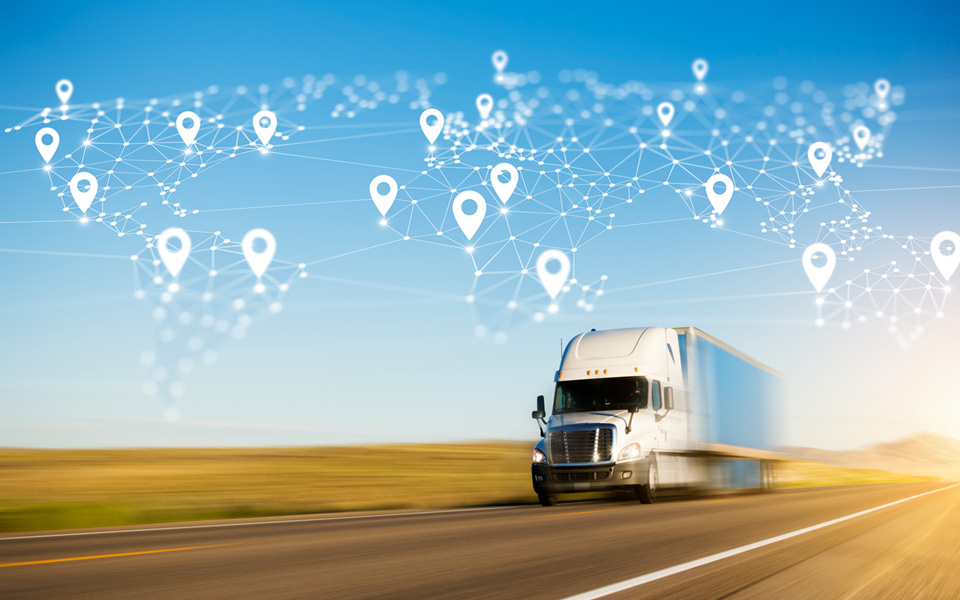*On June 1, 2023 Emerson’s Climate Technologies business became a new standalone company – Copeland. Though our name has changed, we are building on more than a century of HVACR innovation and industry leadership, and Copeland continues to offer the same products, industry stewardship, and learning opportunities you’ve grown to trust. Information found on this webpage posted before June 1, 2023 may contain our old name or branding, but you can be at ease knowing it was created with the knowledge and expertise of Copeland.
Exploring opportunities to offset electric heat pump costs in commercial and residential applications
Along the journey to a future that’s based on more sustainable technologies, comfort heating and cooling systems have been identified as significant opportunities for decarbonization. According to the Environmental Protection Agency (EPA), 13 percent of total greenhouse gas (GHG) emissions can be attributed to commercial and residential heating and cooling — particularly from burning fossil fuels for heating.
Electric heat pump technologies are viewed as next-generation, viable alternatives to fossil fuel-burning furnaces and boilers. Manufacturers and industry organizations alike are making significant investments to advance the adoption of heat pump technologies across a wide range of applications and climates.

Because equipment costs are always a concern, emerging legislation is incentivizing home and business owners to make the switch to electric heat pump technologies. These incentives not only help to offset first costs, but some also create opportunities for broader and longer-term adoption.
Policy drivers of electric heat pump adoption
Federal- and state-sponsored legislation is rapidly emerging to incentivize the transition away from legacy fossil fuel-burning heating technologies and promote electric heat pump adoption.
Federal activity
In addition to rejoining the Paris Climate Agreement, the Biden administration has made GHG emission reduction commitments that are aligned with global Net Zero goals, pledging:
- A 50 percent GHG reduction in the U.S. economy by 2030
- A carbon pollution-free power sector by 2035
- A Net Zero emissions economy by no later than 2050
Congressional legislation and continued initiatives by the Department of Energy (DOE) and the EPA are helping to further the research, development and adoption of heat pump technologies as a strategy for achieving these targets. These efforts include the funding needed to establish heat pump energy-efficiency standards and create incentive programs for consumers.
Congress recently passed the Inflation Reduction Act (IRA) of 2022, which includes several provisions that are designed to help offset the costs of electric heat pumps in home residences and commercial buildings:
- High-efficiency electric home rebate program for low/moderate income households — Qualifying participants can receive up to $8K for an ENERGY STAR® certified heat pump; $4K for an electrical panel upgrade; and additional incentives for wiring, air sealing and insulation.
- Energy-efficient home improvement credit — Homeowners can offset up to 30 percent of the cost of CEE highest tier qualifying heat pumps (with a maximum of $2K).
- Residential clean energy credit — To encourage early adoption of geothermal heat pumps, this credit offers 30 percent before Jan. 1, 2033; 26 percent before Jan. 1, 2034; and 22 percent before Jan. 1, 2035.
- Commercial investment credit – Increases the energy tax credits available for businesses from 10 to 30 percent on qualifying geothermal heat pump system installation costs.
- Energy-efficient commercial buildings deduction — Business owners can receive tax benefits for retrofits to heating, cooling, ventilation and hot water systems (see IRA provisions for a complete list of incentive opportunities).
In addition, the IRA has appropriated $500M in funds to support the manufacturing of heat pumps through the Defense Production Act.
The DOE and the EPA are also developing regulations and standards to promote the next generation of heat pump technologies. DOE establishes minimum efficiency levels for air conditioning and heat pumps in terms of seasonal energy efficiency ratio (SEER) and heating seasonal performance factor (HSPF) for residential applications, and integrated energy efficiency ratio (IEER) and coefficient of performance (COP) in the commercial sector.
DOE’s cold climate heat pump challenge is a call for original equipment manufacturers (OEMs) to overcome known heat pump limitations in lower ambient temperatures. The framework of this challenge is to design residential ducted heat pumps that could operate down to 5 °F and -15 °F. This includes the option to use a staged electric strip heat to cover the lowest ambient temperature requirements. Products developed as a result of this project are scheduled to be commercialized in 2024.
DOE is also sponsoring national lab projects to identify and prove new heating technologies — through the National Renewable Energy Laboratory (NREL) and Oak Ridge National Laboratory (ORNL) — as well as via cooperative research and development agreements (CRADAs) for heat pumps.
The EPA aids in identifying cost-effective, higher-efficiency options by establishing ENERGY STAR mid-tier efficiency levels, providing consumers with “simple, credible, unbiased information” to help them make informed decisions. In their most recent residential Unitary specification, the EPA has identified differentiated heat pump efficiency levels for cold climate heat pumps. Parallel efforts are underway for its commercial unitary specification. Achieving higher energy-efficiency levels remains one of the best methods to decarbonize and offset future grid capacity concerns.
Industry organizations and decarbonization advocates
Key industry organizations are focused on accelerating the development and availability of energy-efficient heat pump technologies. In addition to helping to define the framework of incentive programs, these organizations are promoting heat pump adoption by engaging utility and industry stakeholders, facilitating cooperation, and educating the market on new innovations.
The Consortium for Energy Efficiency (CEE) — a North American group that represents electric utilities while championing decarbonization — also develops specifications aimed at identifying mid- and high-tier efficiency products designed to aid utilities in establishing efficiency levels for rebate programs. Recognizing that heat pump adoption in North America is likely to accelerate, CEE has also recently launched a new initiative to evaluate the known challenges that limit the proper installation and optimization of air-source heat pumps (ASHPs). CEE is working to give utilities and contractors the tools they need to help them properly size and install ASHPs:
- Aligning best-fit heat pump technologies with climate and other regional considerations
- Working with utilities to define rebate structures for home and business owners switching to heat pumps
The Northeast Energy Efficiency Partnerships (NEEP) is helping to advance electrification efforts and transform the region’s fossil fuel-intensive HVAC infrastructure through ductless and ducted heat pump strategies. NEEP is encouraging utilities to offer rebates that incentivize the switch to lower-carbon electric heat pumps and advance the use of cold climate ASHP technologies. Their goal is to transform 40 percent of homes in the Northeast to ASHPs for heating by 2030.
State level
At the state level, a number of states and members of the U.S. Climate Alliance are developing their own decarbonization road maps that include provisions for electric heat pumps within their scoping plans. As the first state to incorporate building electrification mandates into statewide energy codes, Washington is working to mandate all-electric space and water heating in new commercial and multi-family construction. Its State Building Code Council recently passed a measure requiring require new homes and apartments to install heat pumps starting July 2023.
Bans on gas connections to new buildings have been mandated in several U.S. cities, including Berkeley, California, and New York City. In the latter, New York Governor Kathy Hochul has her voiced support for a statewide ban on gas in new building construction. California Governor Gavin Newsom has requested that the California Air Resources Board (CARB) establish aggressive targets for its Clean and Healthy Buildings initiative, including:
- 3 million climate-ready and climate-friendly homes by 2030; 7 million by 2035
- Supplemented by 6 million heat pumps by 2030
- Directing 50 percent of investments to low-income and disadvantaged communities
CARB is currently in the process of defining its decarbonization scoping plans and working toward a final proposal by year-end 2022. All told, these state- and regional-led efforts are setting the stage for accelerated, nationwide adoption of heat pump technologies.
Advancing electric heat pump technologies
Copeland is playing an active role in industry working groups, regulatory committees, and research and development (R&D) efforts to help advance best-fit heat pump technologies and promote opportunities to electrify HVAC equipment. Through The Helix Innovation Center and other research arms, Copeland is participating in many NREL and ORNL projects and supporting the efforts of both CEE and NEEP. We’re helping the industry to set the standard for cold climate heat pump applications and prepare for broader usage of these technologies.
As legislation makes emerging incentives available for early adopters of electric heat pumps, Copeland is working to balance efficiency targets with stakeholder interests. Our R&D efforts are focused on the development of electric heat pump technologies that meet a wide range of end user requirements and are viable across all regional climates.
(Learn more about some of these emerging heat pump technologies in our third installment of our Heat Pump Technology Series.)
Learn more at: https://www.copeland.com/en-us/sustainability/heat-pump-technology

8 proven strategies for rigorous cold chain management
Preparing for the approval and safe use of A2Ls in commercial refrigeration applications...
Protection for high-value shipments just got even better
We’re excited to announce the release of Copeland’s newest real-time tracker, the GO Real-Time...

Three proven strategies to prevent cargo theft
The over-the-road (OTR) transport industry is experiencing a surge in cargo thefts. As thieves...
